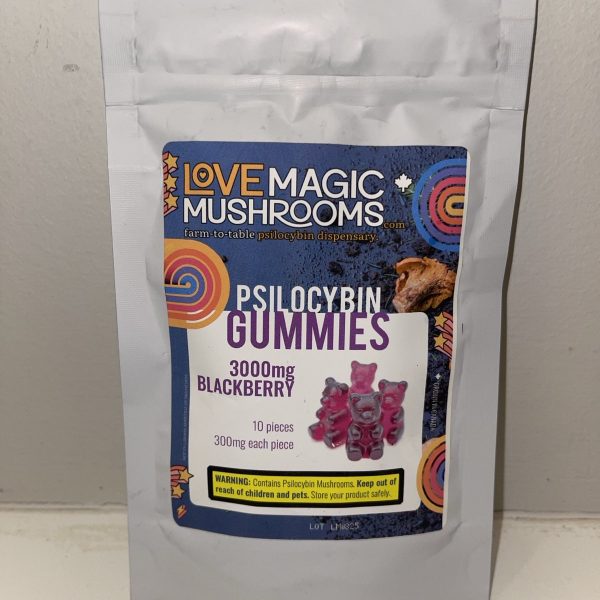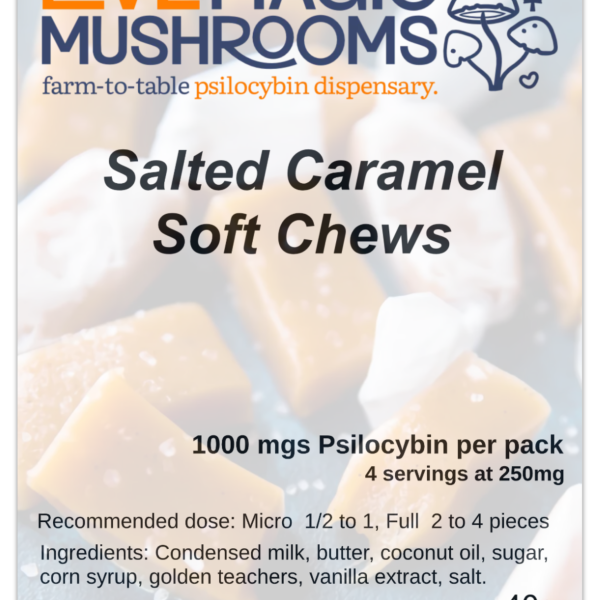Safe microdosing practices have become more popular as people explore the potential benefits of taking tiny doses of psychedelic substances. This approach means taking amounts so small they don’t make you trip, but might still offer benefits like better mood, creativity, and focus. The whole point is to get subtle improvements without the intense experience of a full psychedelic journey.
Microdosing usually involves taking about 1/10th to 1/20th of a regular dose of things like psilocybin mushrooms or LSD. People say they get better productivity, improved emotional control, and clearer thinking from these tiny amounts. But you need to pay close attention to safety rules and proper preparation to do it right.
Understanding proper dosing schedules, where to get your substances safely, and what risks you might face helps make sure you have a good experience. This guide covers everything from basic rules to advanced safety measures, giving you the knowledge you need to approach microdosing responsibly and effectively.
Understanding Microdosing Fundamentals
Microdosing is completely different from taking a full dose of psychedelics. The whole idea focuses on getting subtle benefits while still being able to function normally in your daily life. This method lets people explore psychedelic substances without needing to set aside a whole day or deal with intense experiences.
What Constitutes a Microdose
A real microdose should be sub-perceptual, which means you shouldn’t notice obvious psychoactive effects during normal activities. Most people who do this describe the perfect microdose as creating a barely noticeable shift in awareness or mood. You might feel slightly more creative, focused, or emotionally balanced, but these changes should be subtle enough that other people don’t notice.
Typical microdoses range from 0.1 to 0.3 grams of dried psilocybin mushrooms or 10 to 20 micrograms of LSD. These amounts are roughly 1/10th to 1/20th of what would make you actually feel high. Everyone’s sensitivity is different though, so these numbers are starting points rather than strict rules.
The key sign of proper dosing is that you can still function normally. If you feel obviously altered or can’t do normal tasks, the dose is too high. Many beginners make the mistake of taking too much at first, which can lead to uncomfortable experiences during work or social situations.
Historical Context and Modern Applications
Indigenous cultures have used plant medicines in small amounts for centuries, though not necessarily with the same systematic approach that modern microdosing uses. Traditional practices often involved tiny amounts of plants like coca leaves or kanna for daily boosts in energy and focus.
Silicon Valley made modern microdosing popular around 2010, with tech workers looking for cognitive improvement and creative breakthroughs. This community developed many of the protocols and dosing schedules still used today. The practice spread beyond tech into creative industries, therapy, and general wellness communities.
Current research institutions are now studying microdosing systematically, moving beyond stories people tell to controlled studies. Early findings suggest potential benefits for depression, anxiety, and brain function, though we need more research to know for sure.
Scientific Understanding of Mechanisms
Psychedelic substances mainly work by activating serotonin 2A receptors in the brain. Even at microdose levels, these substances seem to promote neuroplasticity and new neural pathway formation. This might explain why people report improvements in learning, creativity, and emotional processing.
Safe microdosing practices may affect the default mode network, a brain system associated with self-focused thinking and rumination. Small doses might reduce overactivity in this network without the dramatic suppression seen with larger doses. This could explain why some people report less anxiety and fewer negative thought patterns.
The substances also seem to increase brain-derived neurotrophic factor (BDNF), a protein that supports neuron growth and survival. This mechanism might explain the lasting benefits some people experience from microdosing protocols, as new neural connections could stick around after the substance’s immediate effects wear off.
Safe Microdosing Practices Protocol Development
Having a structured approach to microdosing helps keep you safe while getting the most potential benefits. Different protocols have come from community experimentation and early research. These frameworks give you guidance on how often to dose, when to take it, and how to progress while staying safe.
The Fadiman Protocol
Dr. James Fadiman created the most widely recognized microdosing schedule through his research and community feedback. This protocol involves dosing every three days: dose day, day off, day off, repeat. The two-day break prevents your body from building tolerance while letting you observe lasting effects.
Day one is the dosing day where you take your measured microdose and watch for effects throughout the day. Day two serves as a transition day where you might still notice some leftover effects or afterglow. Day three acts as a normal day, giving you a baseline comparison to see how the protocol impacts your regular state.
This schedule typically runs for 4 to 8 weeks followed by a 2 to 4 week break. The pause lets your system reset and prevents developing tolerance or psychological dependence. Many people find this rhythm sustainable for exploring longer-term benefits without overwhelming their system.
The Stamets Protocol
Paul Stamets, a mycologist and researcher, suggested a different approach involving four days on followed by three days off. His protocol specifically focuses on psilocybin mushrooms combined with lion’s mane mushroom and niacin (vitamin B3). This combination aims to promote brain cell growth and cognitive improvement.
The Stamets approach includes lion’s mane mushroom for its potential brain-boosting properties. Lion’s mane contains compounds that may stimulate nerve growth factor production. Combined with psilocybin’s neuroplasticity effects, this combination might offer combined benefits for brain health and cognitive function.
Niacin serves as the third component, potentially improving how well your body absorbs other compounds and promoting circulation. The slight flush sensation from niacin might also help you notice subtle effects more clearly. This protocol typically follows the same 4 to 8 week cycles with rest periods.
Customizing Your Personal Protocol
Everyone responds differently, which means standard protocols might need tweaking for best results. Safe microdosing practices require careful observation and willingness to change approaches based on your personal experience. Things like body weight, sensitivity, metabolism, and lifestyle all affect what dosing schedule works best for you.
Some people find every three days too often and prefer every four or five days. Others might benefit from shorter cycles or longer breaks between protocols. The key is keeping detailed records of doses, effects, mood, and any side effects to spot patterns and optimize your approach.
How microdosing fits into your lifestyle plays a major role in protocol success. Think about your work schedule, social commitments, and other responsibilities when planning dosing days. Many people prefer dosing on days when they can observe effects without pressure, though others work it into their regular routine.
Dosage Guidelines and Measurement Techniques
Getting your measurements right is one of the most important parts of safe microdosing practices. Even small changes in dose can mean the difference between subtle improvement and uncomfortable psychoactive effects. Having proper tools and techniques helps make sure you get consistent, predictable experiences throughout your protocol.
Understanding how to measure accurately and consistently makes all the difference in having successful microdosing experiences. Poor measurement techniques can lead to frustrating inconsistency or accidentally taking too much.
Precision Measurement Tools
Digital milligram scales accurate to 0.001 grams are essential for precise microdosing. Regular kitchen scales don’t have the precision needed for measuring tiny amounts of psychedelic substances. Invest in a quality analytical scale designed for laboratory or jewelry use to make sure you get accurate measurements.
Calibration weights help keep your scale accurate over time. Most precision scales come with calibration weights, but having extra weights lets you check accuracy regularly. Things like air currents, static electricity, and temperature changes can affect readings, making calibration important.
Proper weighing techniques involve using weighing papers or small containers to hold substances during measurement. Static electricity can make lightweight materials jump around on the scale, messing up accuracy. Anti-static weighing papers or grounding techniques help make sure you get stable readings.
Substance-Specific Dosing Considerations
Psilocybin mushroom strength varies a lot between species, growing conditions, and individual specimens. Psilocybe cubensis mushrooms typically contain 0.5% to 1.5% psilocybin by dry weight, but this can change considerably. Starting with lower doses and gradually adjusting helps account for strength variations.
Different mushroom parts contain varying concentrations of active compounds. Stems generally have lower concentrations than caps, and mature mushrooms might be stronger than younger ones. Grinding dried mushrooms into powder helps create more consistent doses by mixing everything together evenly.
LSD presents different measurement challenges because it’s extremely potent and usually comes in liquid form. Most people work with pre-dosed tabs or liquid solutions with known concentration. Volumetric dosing involves dissolving tabs in distilled water to create measured solutions, allowing precise small-dose preparation.
Creating Consistent Preparations
Batch preparation involves making multiple doses at once to make sure they’re all the same throughout a protocol. This approach reduces measurement errors and saves time during dosing days. Store prepared doses in clearly labeled containers with dates and amounts written down.
Capsule preparation offers convenience and discretion for microdosing protocols. Empty gelatin or vegetarian capsules can hold measured amounts of ground mushroom material. This method also eliminates taste issues and makes dosing more socially acceptable in various situations.
Liquid preparations allow extremely precise dosing adjustments. Alcohol or distilled water solutions can be measured by volume using graduated pipettes or syringes. This method works particularly well for LSD microdosing but can also be used with psilocybin extracts.
Safety Considerations and Risk Management
Safe microdosing practices require understanding potential risks and putting appropriate safeguards in place. While microdoses are generally well-tolerated, individual reactions can vary a lot. Proper risk assessment and management strategies help make sure you have positive experiences while minimizing potential negative outcomes.
Being smart about safety means thinking through all the ways things could go wrong and having plans to handle them. Even though microdosing is generally safer than full doses, you still need to be careful and prepared.
Medical Contraindications and Drug Interactions
Certain medical conditions may make microdosing inadvisable or require special precautions. Heart conditions, high blood pressure, and psychiatric disorders involving psychosis or mania need careful consideration. Try to consult healthcare providers familiar with psychedelic substances when possible, though finding knowledgeable professionals can be challenging.
SSRI antidepressants can significantly change psychedelic effects and potentially create dangerous interactions. These medications block serotonin reuptake, which can interfere with how psychedelics work and potentially lead to serotonin syndrome. Getting off SSRIs requires medical supervision and should never be done just for microdosing purposes.
Blood thinning medications, heart medications, and certain psychiatric drugs may interact with psychedelic substances. MAOIs (monoamine oxidase inhibitors) can be particularly dangerous when combined with psychedelics. Always research potential interactions and talk to medical professionals when combining substances with existing medications.
Psychological Safety Protocols
Set and setting principles apply to microdosing just like they do to larger doses. Your mental state and environment influence how you respond to even small amounts of psychedelics. Avoid microdosing during periods of high stress, major life changes, or emotional instability unless you have significant experience.
Integration support helps process experiences and insights that may come up during microdosing protocols. Having trusted friends, therapists, or support groups available gives you outlets for discussing experiences and challenges. Online communities can offer support, but be careful about sharing personal information or illegal activities.
Emergency protocols should include knowing when to seek help and having support people available. While serious complications from microdosing are rare, having plans in place reduces anxiety and makes sure you respond appropriately to unexpected reactions. Keep emergency contacts handy and let trusted people know about your microdosing activities.
Legal and Sourcing Safety
Legal status varies a lot by location, and possession of psychedelic substances remains illegal in most places. Understanding local laws and potential consequences helps you make informed risk assessment decisions. Legal changes are happening quickly in some areas, but staying informed about current regulations is essential.
Source reliability affects both safety and consistency of microdosing experiences. Unknown substances, contaminated materials, or incorrectly identified mushrooms can create serious health risks. Testing kits can help verify what substance you have, though they don’t check purity or strength.
Safe microdosing practices include avoiding purchases from unknown sources and being careful about substance sharing. Growing your own mushrooms (where legal) gives you greater control over quality and strength, though it requires significant learning and preparation. Research growing techniques thoroughly before trying cultivation.
Integration and Lifestyle Considerations
Successful microdosing goes beyond just taking measured doses. The practice works best when you thoughtfully integrate it into your lifestyle and combine it with supportive habits. Integration involves processing experiences, making lifestyle adjustments, and building sustainable practices that support your goals.
Making microdosing work in your real life means thinking about how it fits with everything else you do. The most successful people treat it as part of a broader approach to self-improvement rather than a magic bullet.
Daily Routine Integration
Timing considerations affect how microdosing fits with your daily activities. Most people prefer morning dosing to avoid potential sleep problems, though everyone responds differently. Taking doses with or without food can influence absorption and effects, so experiment to find what works best for you.
Workplace considerations depend on your job requirements and company policies. Many microdosers report improved focus and creativity at work, but others find the effects distracting or worry about professional consequences. Start microdosing on non-work days to understand your responses before bringing it into professional settings.
Social situations may require additional thought when microdosing. While effects should be subtle, some people become more talkative or emotionally open. Plan accordingly for social events, family gatherings, or situations requiring specific social behaviors.
Complementary Practices and Habits
Meditation and mindfulness practices often work well with microdosing protocols. Many people report that small doses make meditation easier or more insightful. Regular meditation might also help you notice subtle effects and integrate insights more effectively.
Exercise and physical activity can work well with microdosing experiences. Some people report better mind-body connection or improved motivation for physical activities. Others find that exercise helps process any restless energy that might come up from psychoactive substances.
Journaling provides valuable documentation for tracking effects and identifying patterns. Regular writing helps process experiences, track mood changes, and notice subtle shifts in thinking patterns. Digital or physical journals work equally well, though consistency matters more than format.
Long-term Sustainability Assessment
Safe microdosing practices include regularly checking whether benefits outweigh risks over extended periods. Some people find sustained benefits from protocols, while others notice diminishing returns or develop tolerance. Honest self-assessment helps determine whether continuing makes sense for your situation.
Break periods let your system reset and give you perspective on the protocol’s effects. Many people notice that benefits continue during breaks, suggesting lasting changes rather than just immediate effects. Use break periods to think about whether you want to continue or change your approach.
Goal reassessment helps make sure your microdosing practice stays aligned with your intentions. Initial goals might change as you gain experience or as life circumstances change. Regular check-ins help maintain purposeful practice rather than just habitual substance use.
Advanced Optimization Strategies
Once you’ve got basic safe microdosing practices down, advanced techniques can help optimize your experience and outcomes. These strategies involve fine-tuning protocols, combining substances, and using technology to track and analyze your responses. Advanced approaches require solid foundational knowledge and careful implementation.
Advanced techniques are for people who have already mastered the basics and want to get more precise about their practice. These methods require more attention to detail and careful experimentation.
Biometric Tracking and Data Analysis
Heart rate variability (HRV) monitoring can give you objective data about how microdosing affects your nervous system. Many wearable devices track HRV, which reflects the balance between your sympathetic and parasympathetic nervous system activity. Changes in HRV patterns might show how substances are affecting your stress response and recovery.
Sleep tracking helps identify how microdosing influences your rest quality and patterns. Some people report improved sleep quality, while others might experience mild disruptions. Detailed sleep data helps optimize dosing timing and identify any negative effects on rest quality.
Cognitive testing apps can provide measurable data about changes in mental performance. Simple reaction time tests, memory assessments, and problem-solving tasks offer objective measures of cognitive changes. Regular testing helps separate subjective impressions from measurable performance changes.
Stack Combinations and Synergies
Nootropic stacks involve combining microdoses with other cognitive-enhancing substances. Common additions include lion’s mane mushroom, various vitamins, and herbal adaptogens. These combinations aim to amplify or complement the effects of psychedelic microdoses, though safety considerations become more complex with multiple substances.
Supplement timing can influence how different compounds interact and affect overall experiences. Some substances work better taken together, while others might be more effective at different times of day. Research interaction potentials and start with conservative combinations before exploring complex stacks.
Individual response tracking becomes even more important with combination protocols. Multiple variables make it harder to identify which components are providing benefits or causing side effects. Systematic approaches to introducing new elements help isolate effects and optimize combinations.
Protocol Cycling and Periodization
Seasonal considerations might influence optimal microdosing approaches. Some people find certain times of year more conducive to psychedelic experiences, while others notice seasonal variations in sensitivity or tolerance. Adjusting protocols based on seasonal factors can optimize effectiveness.
Intensity cycling involves varying doses or frequencies to prevent tolerance and maintain effectiveness. Some people alternate between different substances or adjust doses based on current needs and circumstances. This approach requires careful tracking and attention to safety protocols.
Safe microdosing practices for advanced users might include longer cycles with extended breaks or rotating different substances. These approaches require significant experience and careful attention to safety considerations. Always prioritize safety over optimization when exploring advanced protocols.
Safe microdosing practices require careful attention to dosing, safety protocols, and integration strategies. Success depends on accurate measurement, appropriate scheduling, and honest self-assessment throughout the process. While potential benefits include improved mood, creativity, and cognitive function, everyone responds differently.
The key to effective microdosing comes down to starting small, keeping detailed records, and putting safety above everything else. Proper preparation, quality sourcing, and understanding legal considerations help minimize risks while maximizing potential benefits. Regular breaks and honest evaluation make sure your practice stays sustainable and purposeful.
Remember that microdosing is just one tool among many for personal development and wellness. Combining safe microdosing practices with meditation, exercise, therapy, and other growth practices often produces the most meaningful and lasting benefits. Always talk to healthcare providers when possible and prioritize your safety and wellbeing above any potential benefits.
The field of microdosing keeps changing as research expands and community knowledge grows. Stay informed about new findings, legal changes, and safety recommendations as they come out. Approach this practice with respect, caution, and commitment to responsible use that supports your overall health and life goals.






